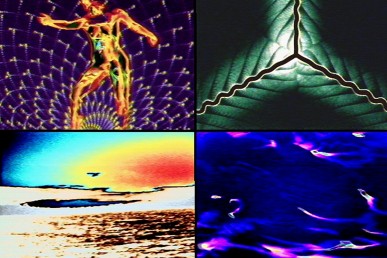‘Analog Dreamscape: Video & Computer Art in Chicago, 1973-1985’
A retrospective of early video art, “Analog Dreamscape: Video & Computer Art in Chicago, 1973-1985,” will be presented Friday, June 13, at 7 p.m. at the University of Illinois at Chicago’s Institute for the Humanities, in Stevenson Hall, 701 S. Morgan St., Lower Level.
A partnership of the institute, South Side Projections, and UIC’s Moving Image Art Minor Program, the event will include a screening and discussion with Daniel J. Sandin, director emeritus of UIC’s Electronic Visualization Lab, and new-media historian Jon Cates of the School of the Art Institute of Chicago.
Sandin is a trailblazing video artist. One of his early videos, “Spiral PTL,” made in collaboration with Thomas DeFanti and Mimi Shevitz, is featured in the inaugural collection of video art at the Museum of Modern Art.
He is the developer of the Sandin Image Processor, a 1973 analog video synthesizer that allowed the artist to radically manipulate images in real time.
An early advocate for open-source software, Sandin made the blueprints for his invention available to the public. The result was a treasure trove of abstract, utterly hypnotic, psychedelic short films. Artwork made with the Sandin Image Processor conjures up the unconscious of a circuit board, creating a chromatic blur of geometric shapes and patterns.
The program will feature a retrospective of work created by Sandin and others from UIC and School of the Art Institute using the image processor and early digital computer systems developed at EVL, an interdisciplinary program at the crossroads of art and computer science where Larry Cuba created the 3-D computer models used in the “Death Star” briefing room sequence of “Star Wars: A New Hope.”

